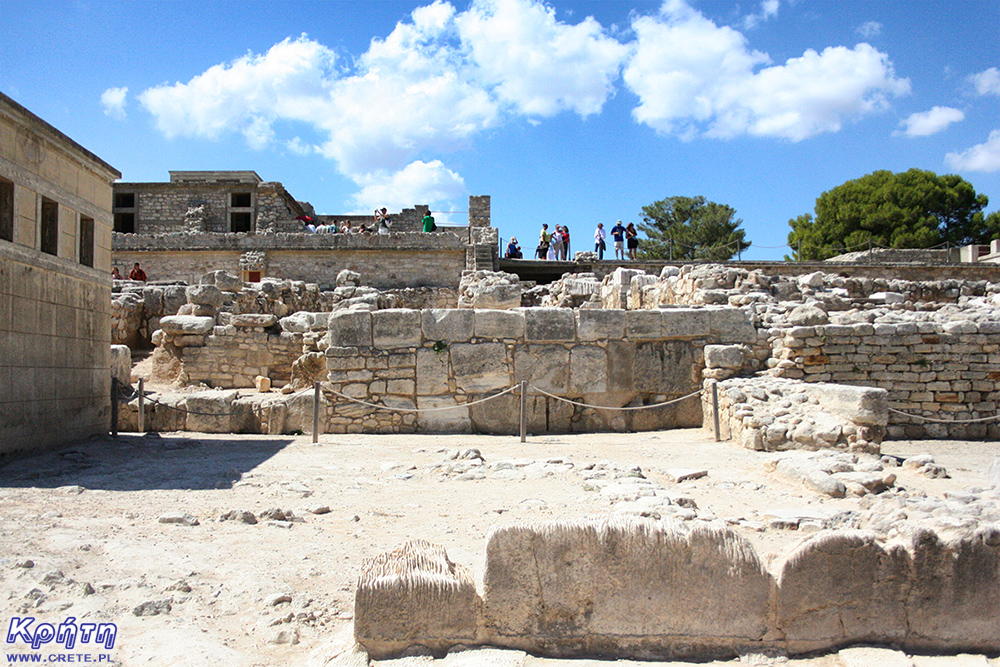
 2024-03-16 18:59:24
2024-03-16 18:59:24
124 years ago, on March 16, 1900, Sir Arthur Evans' workers began the first excavations in what is now the most frequently visited archaeological site in Crete, the palace in Knossos. At the same time, it is one of the most controversial archaeological sites due to the discoverer's treatment of the priceless ruins. On the occasion of today's anniversary, we would like to remind you of the history of the discovery of this place and that it was not the famous Englishman who found Knossos.
The locals have long known that the hill of Kefala, or Knossos, holds the secrets of distant history. Landslides that occurred here after heavy rains revealed remnants of a long-extinct civilization. After many centuries, fragments of old walls and picturesquely decorated clay vessels came to light again, clearly suggesting what the earth hides in this place.
In April 1879, Minos Kalokairinos, a Greek merchant and antiquarian from Heraklion, gathered twenty workers to excavate part of the hill. During these first rough works, they dug up 12 huge pithos, or large clay jars. However, for political reasons, the work was stopped quite quickly. Kalokairinos did not keep his discovery a secret, so many scientists and foreign institutions quickly became interested in them. Everyone started applying for a license to conduct excavations.
Not only the French and Americans fought for the rights to the hill, but also Heinrich Schliemann, who was famous for discovering Troy and Mycenae. In addition to having considerable wealth, Schliemann also had an archaeological nose. In 1883, he made an official request to the then Turkish authorities for permission to start excavations on the Knossos hill. This is yet another proof of the explorer's instinct, because Schliemann had not even seen the hill in person until that moment.
The owner of this plot initially demanded PLN 100,000. francs for the opportunity to explore the entire area. However, it was finally sold to Schleimann in 1889 for only PLN 40,000. francs. Where was the catch with such a large discount? Well, in fact, the discoverer of Troy bought a much smaller part than he originally expected. The first findings covered an area covered with 2,500 olive trees. However, the clever owner, in Schliemann's absence, reduced the land on display to only 888 trees. However, the famous German was not destined to make another spectacular discovery, as he died only a year later.

And this is where Sir Arthur Evans comes on the scene, whom everyone associates with the discovery of the most famous Minoan palace in Crete. Evans regularly visited Crete in the late 19th century, where he conducted regular cave exploration. He also started trying to obtain the rights to the famous hill hiding the distant history of the Minoans.
In 1898, the Turks withdrew from the island and Evans took advantage of the political changes that took place in Crete. Supported by the British consul and some Greeks, he began negotiations with the new autonomous government in Chania. Ultimately, Evans paid for Knossos and part of the valley that surrounded the hill... 435 pounds. The United Kingdom flag was raised over the newly purchased land, and the workers employed by Evans broke the first shovels on March 16, 1900.
Although today many of the works performed by this British archaeologist are considered by current scientists to be very primitive and brutal, it must be admitted without any doubt that it was Sir Arthur Evans who had the greatest influence on the current character and appearance of these excavations.
 2024-03-16 18:59:24
2024-03-16 18:59:24
Komentarze
komentarz z
Nádherná památka byla jsem tam 2x ❤️
komentarz z
Warto zwiedzić.
komentarz z
Warto. Niezależnie od wszystkiego.
komentarz z
Byłam, widziałam, poczułam moc tego miejsca
komentarz z
Prace wykonane przez Evansa, tak bardzo kontrowersyjne, doprowadziły jednak do tego, że Pałac w Knossos jest najchętniej odwiedzanym zabytkiem na Krecie. Pałac w Zakros czy nawet Fajstos, tak bardzo autentyczne, nie mogą się poszczycić taką popularnością. Może więc nie należy nadmiernie krytykować poczynań Evansa, ale zachęcać do odwiedzenia po Knossos muzeum archeologicznego w Heraklionie, które jest genialne i w którym można zobaczyć to wszystko co Evans nieudolnie próbował odtworzyć i dużo więcej.
komentarz z
Bogna Elias Każdy medal ma dwie strony. Z jednej strony faktycznie pałac przyciąga tłumy i jest to najważniejsza atrakcja turystyczna na Krecie. Z drugiej strony ile z rekonstrukcji jest tylko swobodną nadinterpretacją odkrywcy? Nie można cofnąć czasu oraz tego co Evans zniszczył podczas prowadzenia swoich prac. Archeolodzy dzięki jego nieprzemyślanym metodom działania stracili bezpowrotnie szanse na dokładne odkrycie i poznanie pałacu w Knossos. Mimo to oczywiście my zachęcamy do odwiedzenia zarówno samego pałacu, jak i genialnego muzeum archeologicznego w Heraklionie a także innych stanowisk archeologicznych Krety.
komentarz z
Piękne miejsce.
Wypełnij poniższy formularz aby dodać komentarz
lub kliknij w poniższy link aby skorzystać z możliwosci komentowania przez facebooka:
https://www.facebook.com/crete.poland/posts/799704838870449